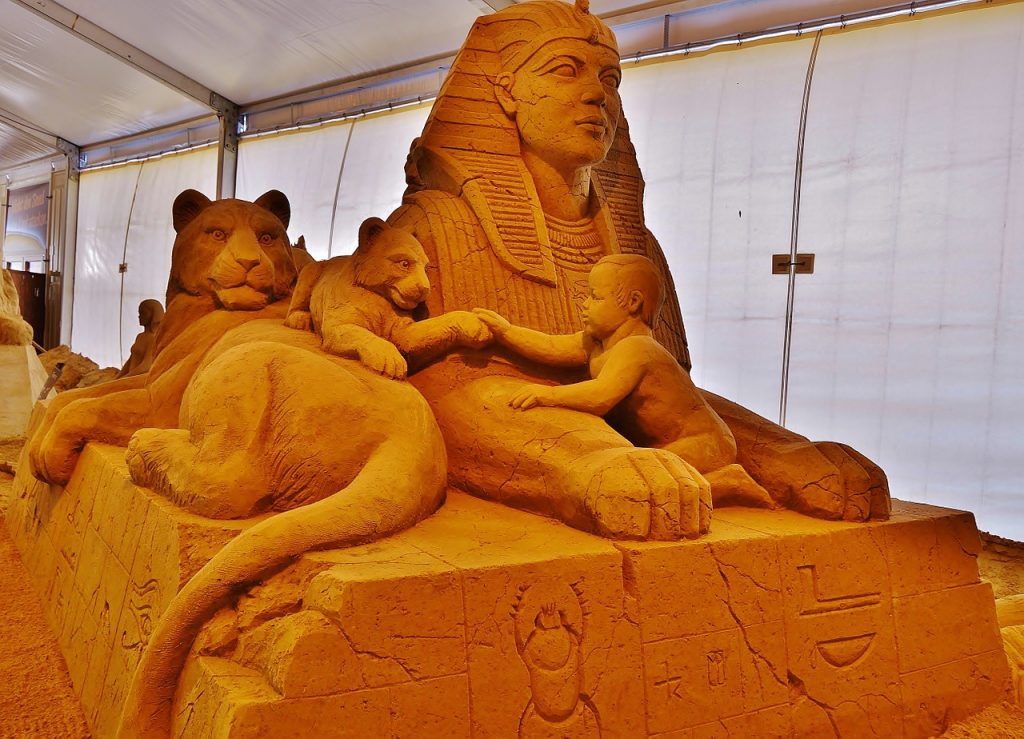The Origins of Egyptian Symbolism





Most Common Egyptian Symbols and Their Meanings
Egyptian symbolism has its origins in their most ancient creation mythologies. There may be quite a few creation myths, as diverse as the many different parts of the country from where they came, but what they have in common is the belief that in the beginning, there was nothing but the chaos of violently flowing, bubbling water called Nu. This in itself is a symbolism for the great river Nile. Out of this great river, everything came to be.
When the sun first rose on land after the raging waters receded, the many symbols and deities associated with it were born. As the creation myths continued to unfold, many more Egyptian gods and goddesses and the symbols that represent them in the physical world also developed. Some of the earliest and most popular ancient Egyptian symbols are described below.

Ibis Bird
The ibis is a long-legged wading bird with a long, down-curving bill that the ancient Egyptians regarded as particularly sacred and associated it with the god Thoth. Thoth was the god of wisdom and learning. He is often depicted with the body of a man and the head of an ibis. The curved beak of the ibis, in particular, represents the crescent moon which is another attribute of Thoth.
As a wading bird, the ibis travels through land and water both, and probes deep into the earth below to get real nourishment from the larvae of locusts and crustaceans. The ibis also writes on surfaces. Thoth personifies these traits, getting deep intellectual nourishment from spreading knowledge, writing, and language.

Eye of Horus
In ancient Egyptian symbolism, the Eye of Horus signifies royal power, protection, and good health. It is also sometimes referred to as the Eye of Ra. In Egyptian mythology, it is said that after the god Osiris was killed by his own brother Set, god of the desert, storms, darkness and chaos, Osiris’ son, the sky god Horus fought with Set to avenge his father’s death and to take control of the throne. Horus lost his left eye in this fight. The gouged-out eye was recovered and restored, and Horus offered it to his father Osiris, hoping his sacrifice will completely restore Osiris’ life. The Eye of Horus from then on became a symbol of sacrifice, restoration, healing, and protection.

Scarab (Winged Scarab)
The scarab beetle is a common symbol of protection, resurrection, and transformation in many cultures, but most significantly in ancient Egypt where images of the winged scarab abound. Early Egyptians believed in universal truths or spiritual and divine realities that are represented by everyday occurrences in the physical world. They drew parallels between the short life of the scarab beetle, emerging from animal dung and spending their short adult lives rolling feces to feed their young until they finally become ready to spread their wings and fly. This seemingly insignificant natural occurrence reveals a beautiful message of hope for humans especially those living hard physical lives. Death for the Egyptians is a welcome transition from the physical into another realm of existence. The scarab symbol is often placed in the tomb of the departed, to guide them in the afterlife.

Feather of Ma’at
The feather of Ma’at also called the feather of truth is a single ostrich feather that the goddess Ma’at wears on her hair. She was the ancient Egyptian goddess of truth, morality, order, and justice. As an ideology governing the norm for nature and society, Ma’at has been recorded as early as the Old Kingdom, according to the earliest surviving pyramid texts of Unas around 2375 BCE. Ma’at the goddess has the daunting role of making sure the world does not return to chaos, and her primary task was to weigh the heart of the departed against her ostrich feather. If the heart which is the vessel of the departed’s soul is heavier than the feather of Ma’at, the heart is devoured by the lioness goddess Ammit and the soul it contains is condemned to stay in the underworld. Pharaohs are often portrayed with the emblem of Ma’at symbolizing their role as guardians of the laws.

Egyptian Hieroglyph
Egyptian Hieroglyphs form the earliest and longest-existing Egyptian pictorial script. The ancients called them “words of the gods.” King Ramesses himself was depicted assisting the god Thoth as he prepares to write. The very first hieroglyphs date back to 3100 BCE and are found on pottery. Hieroglyphs were originally used to write different texts on any surface, but they eventually became reserved only for religious writings and monument markings carved on stone. Ancient Egyptian priests had the exclusive right to learn and write the Hieroglyphs.
There are over 700 symbols in the entire system, and it has proven to be the single most important medium of understanding the mysteries, the accomplishments, the discoveries and the history of ancient Egypt.
Ancient Egyptian symbolism holds a fascination not just for archeological scholars but for many ordinary individuals all across the globe; individuals eager to learn about symbols that for them have the potential to influence their lives in a positive way.
.
